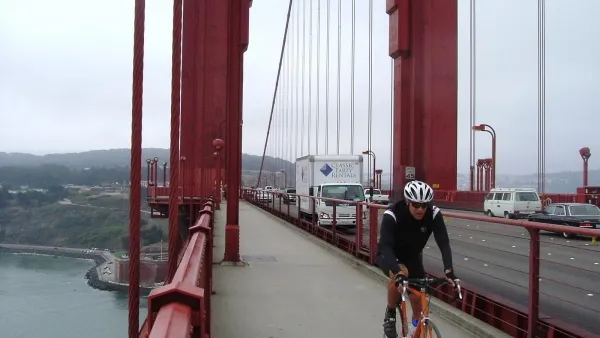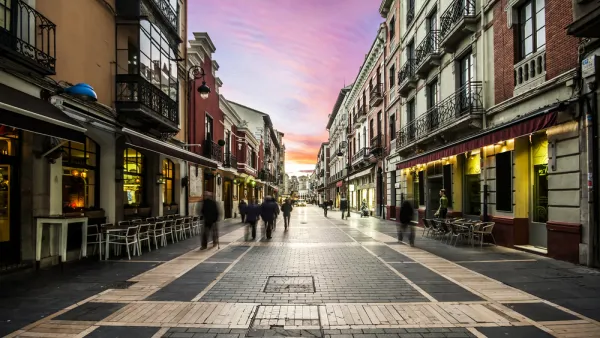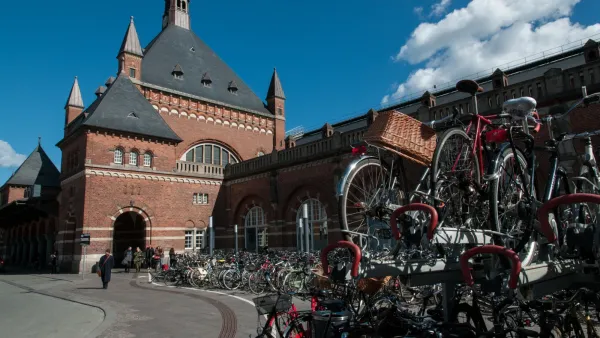San Francisco is expanding a program of traffic light synchronization for cyclists, which is patterned after successful applications in Copenhagen, Amsterdam and Portland.
Aaron Bialick reports that the city's second green wave is now operating on 14th St. after the San Francisco Municipal Transportation Agency began work on the corridor in March. The first green wave has been operating successfully on Valencia St. since January of last year.
SF Bicycle Coalition Communications Director Kristin Smith said the organization "is very pleased to see the ‘green wave' tool used on more and more of San Francisco's key bikeways."
"It's a simple but powerful way to prioritize bike traffic and make bicycling even more convenient and comfortable," she said. "Of course, it's not just good for bike traffic - by pacing traffic to a human speed, green wave streets are safer for everyone."
"(In June), staff from the SF County Transportation Authority plans to propose 'four to six potential new Green Wave corridors along the existing San Francisco Bike Network.' The SFCTA board is expected to approve $71,000 in Prop K sales tax funds in June to plan and implement them, and the document says they could be completed between April and October of next year."
Reporting on the city's first green wave project in January of last year, Aaron Bialick notes that the Valencia St. green wave is not of the same scale as it's more famous cousin.
"The other more widely known Green Wave is Copenhagen's Nørrebrogade, the busiest bicycle street in the Western world, carrying an average of 38,000 cyclists per day with bike lanes as wide as 16 feet. There, implementation of the green wave has also improved the flow of its heavy bus traffic."
[Contributor's note: See the photos of the Green Wave signage above Valencia St. and in Copenhagen.]
Take a short ride on Nørrebrogade by viewing the video on Copenhagenize.com: Surfing the Green Wave in Copenhagen.
Thanks to SF. Streetsblog
FULL STORY: SFMTA Installs Second Green Wave for Bikes on 14th Street

Analysis: Cybertruck Fatality Rate Far Exceeds That of Ford Pinto
The Tesla Cybertruck was recalled seven times last year.

National Parks Layoffs Will Cause Communities to Lose Billions
Thousands of essential park workers were laid off this week, just before the busy spring break season.

Retro-silient?: America’s First “Eco-burb,” The Woodlands Turns 50
A master-planned community north of Houston offers lessons on green infrastructure and resilient design, but falls short of its founder’s lofty affordability and walkability goals.

Test News Post 1
This is a summary

Analysis: Cybertruck Fatality Rate Far Exceeds That of Ford Pinto
The Tesla Cybertruck was recalled seven times last year.

Test News Headline 46
Test for the image on the front page.
Urban Design for Planners 1: Software Tools
This six-course series explores essential urban design concepts using open source software and equips planners with the tools they need to participate fully in the urban design process.
Planning for Universal Design
Learn the tools for implementing Universal Design in planning regulations.
EMC Planning Group, Inc.
Planetizen
Planetizen
Mpact (formerly Rail~Volution)
Great Falls Development Authority, Inc.
HUDs Office of Policy Development and Research
NYU Wagner Graduate School of Public Service




























